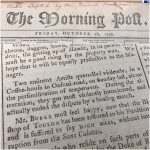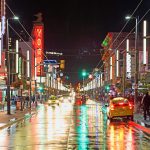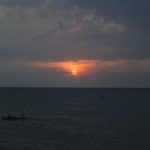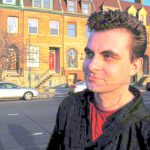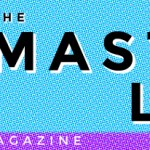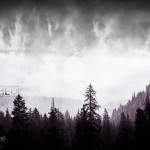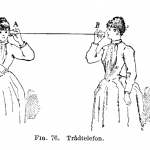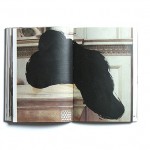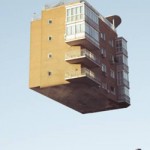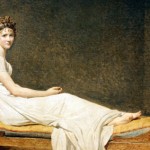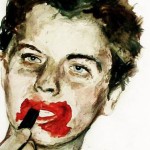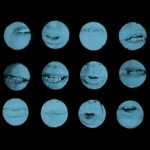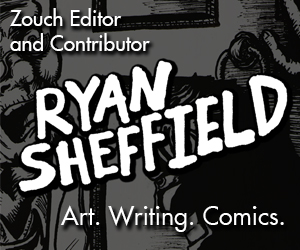
Pavilion: An Excerpt
Art, Comics, Commentary, Culture, Essays, Fiction, Literature, Memoir, PoetryThe Rat Hole lay behind the old Physics block between the disused boys and girls changing rooms next to the hockey and football pitches. It had accommodated smokers for seven years and it smelt of mushrooms inside. It was partially hidden by a wrought iron staircase that was bent by people kicking it and on a winter’s day you could see the children packed in there like live stock and their embers glowing. The faces lit by cigarettes were usually pale grey and you would look at them when they were looking in the opposite direction. But when you walked into it there was the black mould over the walls of that dank human ashtray and you could hear the commotion caused by an approaching school teacher a significant time before they came near to the Rat Hole.
It was a dark and broody place to spend your break time and no place to meet new people. New people brought temptation from the estates, experiences from the brink and from the muddy slope of the school on quiet days you could hear the frisking of targeted children and if you went to the Rat Hole you could see the shabby graffiti they made in the shelter. At night chavies had no fear and everyone else feared them. But in the day they stayed away from Joe Blow and if they did come up to you could you see the trepidation in their faces.
Jane Caldwell, who was a undisciplined teenager, lived there in a house in Carrick Knowe and went to school there in Edinburgh at Forester High School. After one had lived there in those circumstances long enough, the changes to brain chemistry become as significant as anywhere else and Jane Caldwell, who loved her life, did not want to miss any misadventure, nor experience, nor any sensation.
Sometimes the misadventures were too mad when fear overtook the evening, or when malevolent spirits ruled in November and December. Violence might come on Friday or Saturday or a weekday and even on a Sunday and there could be extensive druggy sessions any time from 4pm on. But the true drug fueled months have fine weather when there are no parents.
Jane Caldwell had taken LSD for many years and she could tell when the sky would fall down when there would be psychotic episodes long before the terror began. She knew too the torture of other people at the Pavilion and the connection that the cannabis resin made between all teenagers who had sampled it. She also knew that freak-outs could be so bad that she felt she could not live through them. She always postulated, at first, that if there was ever one so bad she would remain like that and go to her maker still high.
The Park felt as much like a tree house as an open space. Placed there to serve teenagers, the Park was built into the scheme as though the scheme were built around it; and you saw the Zoo from all directions and there was a network of good garden skives so that you slipped coolly through the estate in a timely fashion. All houses were pebble dashed in the same way and your home could be mistaken for another when stoned. It was the essential thing at the Pavilion except for long drinking sessions of cheap tasteless beer, those were the first things you did as you grew through the Park. Then, as you became older, you took more risks at the Pavilion with stronger drugs, Red Dragons, Strawberries.
On the weekends, when the seniors came and the Park was cold, the Pavilion was warm because it was the only shelter in the Park.
She had a large chunk of cannabis nestling in the sneaky pocket of her jeans. It was peppered by bits of plastic and crumbled smoothly and he became fond of the burn marks to her thumb and index finger. But, there was always more cannabis in the Park after the big droughts and she found it fun to smoke slate even the bits she was conned on. She knew she could get more, and on a cold night she would strain under the big light in front of the rugby club, rolling by the lamp that stood over the heavy steel door and looking up would see the cacophony of moths above, hear the crashing of the traffic, and observe the wicked, intoxicated people wandering around.
Sometimes she would extinguish a joint, lie in the dust on the pavement, and watch the fractiles and hues that the cannabis and LSD made in the night’s sky as they took effect. On the walkway her eyes were level with the line of the hillside mansions, she could see the boundaries of the Zoo, and it made her both indifferent and uninterested. All drugs she took affected her in this way. But the powerful LSD did something else to her something that she could not define. She thought that it was probably wrong to rewire her brain when she was so fond of it; but she felt no guilt about it.
As she lay on the pathway, she felt under the eyes of others although, really, they attended to one another at other parts of the Park, around the Sweet Spot and Majeid’s and Spar. On the ground she could feel the surging of the LSD the way she remembered hearing the sound of The Doors when she had first listened to them at home a few weeks ago when she had been on holiday.
The doorway was a terrific shelter in winter and during all the other seasons; she regarded at it with endearment and imagined how it would be when summer came again. Summer was the brightest of all seasons at the Pavilion and she wished for its arrival throughout the rest of the months.






